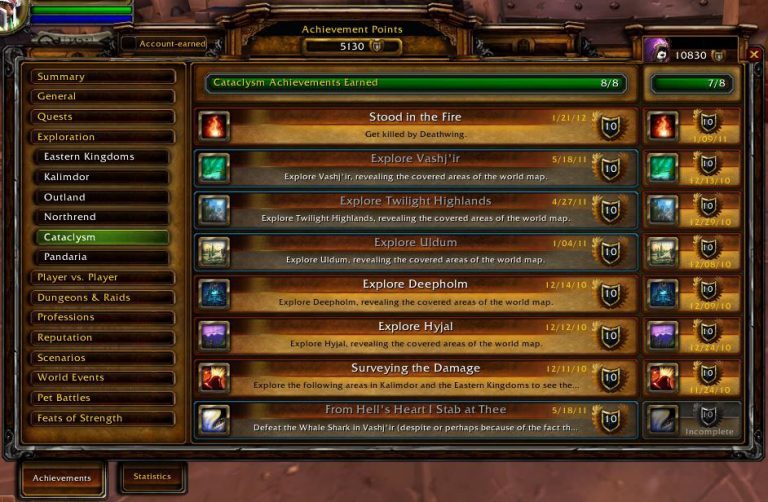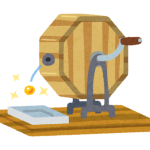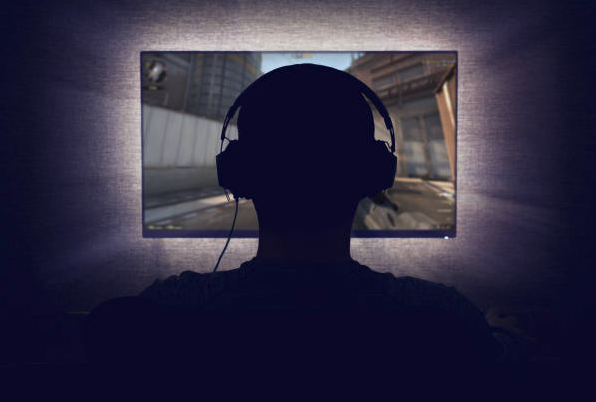Contact Center Attrition - Retention Through Gamification (Part 2 of 3)
In the previous article we bring the uncomfortable truth that is employee attrition forward. We've acknowledged it's a problem - to what degree varies with the organization and how it currently operates. Hopefully some legwork has been done to start developing an idea of where the sentiment toward the organization, its culture, employees in supervisory roles, and even toward peers sits. Depending on what you've found or think may be the case, you know you've got some work ahead of you.
With this article, we'll discuss the concept of gamification as a method of implementing a system to an existing one to abstract away classical metrics while appealing to the motivators that are competition, recognition, and possibly reward.
Enter Gamification
Gamification as a concept is hardly new and yet it seems to have become one of those popular contemporary buzzwords, but what is it really and how does it help with attrition? At its core gamification represents game-like elements integrated into systems that may or may not be for entertainment purposes. In other words, it's a method to make work appear and feel less like work through the abstraction of a game. The simplest example is to tie a counter to a user account. Let's say, for example, if Netflix implemented a counter of how many different TV series and movies you've watched on your profile with titles and can compare how much content you've viewed to other profiles on the same account or even across other accounts. Perhaps the count for watched TV Series and movies are kept separate and every 20 titles watched puts a title appellation next to your user profile name like "Movie Buff" or "TV Connoisseur" with different profile appellations for each additional 20 title increment. The benefit to Netflix for doing this is to motivate subscribers to watch more content on streaming and may also see an improvement in the number of customers who decide to rent content on DVD or Blu-Ray not available for streaming. Another possible benefit might be a "screener" privilege for users to have early access to new content added to the service, which also serves the purpose of letting the "screener" users drum up interest among their social circles.
In this example, the idea of attaching an "achievement" for consuming Netflix content on an account is a game-like mechanic. Netflix itself is not a game, but by giving subscribers a way to compare against others, possibly in a self-perceived competition, the service has become gamified subtly. While this example was very simple - in reality this could be an added content field on a Netflix profile that is tied to a very simple database query - gamification can take on a wide variety of implementations up to the point of turning aspects of a non-entertainment, non-gaming service or system into a game unto itself.
Yet another example that introduces an actual reward might be if you're a parent you may have turned something the children dislike doing like brushing their teeth or eating vegetables into a game of sorts rewarding them for doing so. This emphasizes the reward and not their displeasure at eating those greens that might otherwise end up on the floor or given to the dog. The interesting thing with this example is we return to the basic idea of cost benefit analysis where doing something unpleasant is ultimately outweighed by the benefit doing so provides, and so we've appealed to the motivation for a reward or benefit to achieve a desired outcome. However, whether or not this example is a good parenting practice I'll leave for the reader to decide, though we may generally agree dogs shouldn't eat too much broccoli.
The Pros and Cons of Gamification
Naturally, when you modify a system or method of doing things to be a game or more game-like you are doing two things:
- Masking motivation to work for employees as motivation to play or compete appealing to several different psychological motivators individuals possess: competitiveness, recognition, entertainment/engagement, and benefit.
- Adding a sublayer of varying complexity to the system itself through the mechanics and implementation of the "game". How elaborate the "game sublayer" is generally creates the relationship that the more abstracted work elements become, the more complex the implementation becomes. Refer back to the above section for a very simple example of how to turn a metric into a game with minimal change.
In doing this, you are really hinging on following:
- The "game" or game-like implementation is engaging enough to be effective at motivating employees as a majority to better perform their duties.
- The "game" or game-like implementation does not experience an exponentially growing curve of progress and engagement. That is, visible progress and achievement is easily obtained at the beginning of the "game," but visible progress as time goes on becomes very sparse. In layman's terms to ensure the distance between the horse's mouth and the next carrot are always far enough apart to ensure the horse is willing to pull the cart far enough to get the carrot rather than losing interest in it.
- Employees are truly motivated by imaginary achievements and milestones as a motivating goal where actual goals may or do not exist.
As all people have different motivational factors and different degrees for each, we do not recommend a single method approach be realistically expected to work as a cure-all panacea to attrition. It may significantly help, but doesn't account for individuals who are motivated differently. If at all possible, seek ways to integrate aspects of these recommendations into each other to create a motivational system end to end.
Milestone Systems
At this point, I will be exploring different gamification methods and at a high level what they involve and accomplish. Though please note further research into the actual time effort cost for your individual situation may vary.

Achievements can be given and displayed as badges, which are also commemorative like titles.
Pure game mechanic solutions to gamification do not introduce any real-world rewards to employees, only a self-perceived valuation hinging on an explicit or implicit competitive element such as being point-based or achievement-based. For the sake of ease of reference, I call these mechanisms milestones. Milestone systems are typically implemented as a points or tracking to achievement mechanism where the points are used as progress toward something larger - hence the term milestone. Points themselves can be tied to some measurable unit of work like number of calls taken inbound, calls placed outbound, number of successful sales, etc.. The thing to note here is all of the examples listed could be lumped together as "work," so points from doing this work are all the same "points". On the other hand, you could implement the points to be tied to the type of work such that points earned from taking inbound calls are separate from those earned for making outbound calls. Additionally, you can assign quantity of points or progress by the quality of work such that employees evaluate the optimal method of "playing" this game as doing the best work they can in the highest volume they can achieving quality and quantity rather than one or the other.
This opens up the possibility of having employees work toward specific or multiple milestones at once. If we loosely define the rules of the "game" such that employees recognize employees with higher levels or larger quantity of achievements have done more work, it replaces the need for an explicit leaderboard which may only tell you in traditional terms who the most active employee is, though not necessarily if they are the most effective or high quality employee. The traditional implementation of an employee leaderboard typically focuses on one or two aspects of employee performance while inadvertently undermining others.

WoW and work - two things you would normally not think related to each other in a good way.
The last component necessary for a milestone gamification system is the definition of the milestone itself. If these are "levels" whereby the points are accumulated toward further levels, you need to be careful to avoid exponential growth. That is, gaining levels early on for employees is very easy while over time it becomes extremely hard. This is a common issue with actual video games where progress early on is incredibly easy to entice players to keep playing - typically in the hopes they spend money and the money spent becomes a deterrent for them to eventually abandon the game. While not in complete alignment with gamification in a non-gaming system, the same potential holds where employees lose interest in the "game" and therefore lose motivation to perform the work to "play the game".
Related to the concept of "levels" for a milestone gamification strategy are achievements. Levels, while easy to tell at a glance how far along or advanced someone else is compared to yourself, are often boring as it reduces the employee's efforts to a number or title. Achievements can operate almost identically to levels, but can have very different requirements in obtaining. Steam, Reddit, and most of the prominent home console system platforms implement such a system though the name for the concept can vary (badges, achievements, trophies, etc.). The intent is to show off accomplishing something specific. The notable thing about this is you can implement milestones that actually aren't work task related, such as having an achievement based on how long an employee has been with the organization such that it becomes a more casual "who's who" of the workplace. Achievements have the strength they are not bound to a single counting mechanism for progress and can therefore play employees' strengths and motivate them to be involved in other aspects of the organization. Employees may take a surprising amount of pride if they can show off they've been in Finance for 3 years as well as in Marketing for 2.
Sweepstakes Systems
Though easily inferred, sweepstakes systems record employee activities to ultimately win or possibly win something. The actual reward can widely vary. It might be something that is conferred to an individual or even to an entire team like a gift card for the individual or a company sponsored team lunch or activity (maybe skydiving?). Sweepstakes gamification systems tap into the motivation for a reward and much less for the recognition associated with being "the winner".

Sometimes the pretense of possibly winning something through participation is motivation enough.
Like milestone systems, employee/team performance must be qualified in a way that defines the "rules of the game". For example, if we determine the reward is something an individual wins for being the top, we might measure that in terms of "greatest number of X" or some other metric we consider valuable overall operations. Because we need to determine a "winner" or "winning team," it is by extension necessary to define a term to our sweepstakes system. My recommendation is to avoid terms longer than one business quarter as the length of time becomes hard to keep motivated or paced and the winner is more the result of a few individuals being motivated and the rest not motivated.
The downside to this approach introduces problems all its own that may cause it to ultimately backfire. If you consider the case of motivating employees by rewarding the employee with the highest something, if the winner is a particularly competitive or reward-driven employee, this employee has the propensity to win multiple times thereby monopolizing the rewards. The inability to obtain a reward by anyone else can conversely demotivate them from participating such you may find productivity at the same or even lower levels than before the "game" was implemented. In this case, you are essentially spending resources to motivate a single employee at the expense of everyone else.
This can be sidestepped by combining the sweepstakes system with the milestone system by asserting "for every X, the employee gets Y" where Y might be something like an entry into a raffle drawing. This ensures that employees who are motivated have a higher probability of winning than those who are not. Supplement this with multiple prizes or prize pots and the detrimental side effects of there being a single winner consistently are mostly mitigated. In practice, this could be something like "for every 100 calls taken, the employee can enter one entry into one of three raffles of their choosing." Of course, with this particular implementation, the issue of favoritism between employees and those administering the sweepstakes system presents a point of failure.
Affirmation Systems
While all gamification systems seek to affirm and motivate, affirmation systems are used to describe systems that combine a competitive counting mechanism found in milestone systems with a social valuation aspect. In practice this usually ends up looking very much like the like/retweet count and who liked/retweeted mechanisms of Facebook and Twitter. This plays into employee motivation in that the employee is given affirmation by supervisors and/or managers for their performance thereby validating to the employee their work is visible and appreciated. The "game" aspect of this system is freer to interpretation: is it more valuable/telling an employee has many instances of affirmation or is it more valuable depending on who gave them affirmation? Posed in this way in regard to value and scarcity, affirmation systems are really just milestone systems measured somewhat differently.
Like sweepstakes systems, affirmation systems have the pitfall that they can be vulnerable to favoritism. Not unlike actual social media platforms, this can lead to exclusion and resentment of employees and supervisors that at worst can culminate in a headache for HR. If such a system is implemented, consider having employee performance measured in some recurring time interval and then the respective affirmation giving employees/supervisors recognize some top performers across different categories to maintain impartialness.
1UP Systems
Coined from beloved platforming games of yore, 1up systems typically do integrate an actual game to the system with work activities providing employees the ability to "play" the game in some defined capacity. While not necessarily measured in terms of "for every 100 calls the employee takes, the employee can play this game once," 1up systems can implement the concept of a game currency not unlike social media games like Farmville where currencies are used to purchase crops, decorations, etc. for the player's farm. In this way, whatever merit/work-based "currency" the employee accrues can be used in whatever manner they deem satisfactory.
More so than any other gamification system 1up systems integrate the motivating factors of entertainment. Given this, such systems have all the perils of gaming obsession such that the employee is more concerned with playing the game than being aware of work. The core intent of gamification is to abstract aspects of work to not appear or feel like work, not to make work literally into a game unto itself.
Implementation of 1up systems require careful consideration and monitoring. This is especially true given the initial implementation may greatly improve one aspect of productivity and quality at the expense of another. Remediating this undesirable side-effect may be difficult if the "game" isn't flexible enough to accommodate the change in business objectives.
Gamify Within Reason

Remember, the objective is to abstract work through game mechanisms, not to turn work into a game.
You may have noticed each of the varieties of gamification discussed above tends to get more and more complex. While engagement is desirable, there is a threshold at which a gamified system becomes too much a game in of itself and less a system for work and productivity. At the same time, the more such a system becomes a game more effort must be invested to implement the game depending on how in-depth it is.
If you decide a gamification approach is viable, I invite you to carefully consider the following:
- Work to Game Integration - how much and how deeply are a game or game elements going to be built in alongside the actual work system?
- Employee Engagement Lifetime - how long do you envision the "game" being effective at maintain employee interest to stay motivated? What do you anticipate to happen beyond the engagement lifetime of the implementation? Do you find new ways to add "content" to the game or anticipate most employees to have moved on anyway by or after the engagement lifetime?
- Effort/Cost to Implement to Effectiveness ROI - You get to do your own cost benefit analysis! Is the cost of a service that integrates gamification elements to a workflow worth the subscription cost? Is it worth it to spin a few developers off to build your own gamification system? Can you provide proof the implementation is effective at reducing attrition?
More to Come
At this point you may be either thoroughly intrigued with the notion of gamification to address employee motivation problems to curb attrition or find the entire idea of turning work into a game ludicrous. While this might seem overwhelming remember you can start small! It doesn't even need to be an integrated system, it could be something fairly crude like using a poster with employees' names with stickers.
By the end of this series I hope you'll have come across ideas on how to keep employees around longer and improving their satisfaction/morale as well as have given thought on what might work well or not so well for your own organization.